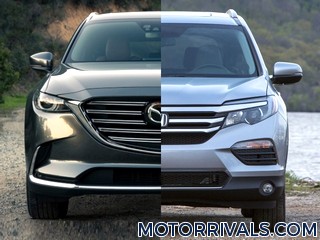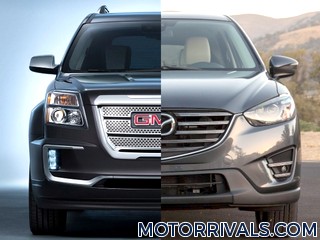2018 Toyota C-HR vs 2017 Honda HR-V
Toyota Press Release Highlights
Powertrain
The C-HR's engine, a punchy 2.0-liter four-cylinder producing 144 horsepower and 140 pound-feet of torque, sends all power to the front wheels via continuously variable transmission (CVT). The engine employs many of Toyota's latest generation of technologies, including Variable Valve Timing (VVT) and Valvematic, both of which have received extensive optimization to enhance fuel economy and smooth operation. Valvematic offers a broader range of continuously variable valve timing (lift and phasing) to provide optimal intake valve (not on exhaust side) operation relative to engine demands. The all-new CVT received much attention by engineers, and utilizes redesigned pulleys to enhance acceleration and fuel economy; a new belt structure to reduce cabin noise; and, a world's-first coaxial two-port oil pump system that allows for continuous oil pressure modifications in various driving conditions. A Preload Differential helps to distribute torque between the left and right wheels during low-speed operation to make for easier, composed driving. Of course, drivers and passengers will appreciate the powertrain's fuel efficiency, impressive smoothness, and quiet operation, but they'll love Sport mode and the simulated 7-speed Sequential Shiftmatic. Engaging the Sport mode via the MID increases the responsiveness of the throttle, quickens the CVT's automatic artificial "step-up" shifts, and maintains high engine speed to enhance acceleration. The EPS' feedback is weightier for a more confidence-inspiring feel.Chassis
The Toyota C-HR's unique character demonstrates the flexibility that the TNGA (Toyota New Global Architecture) gives to vehicle developers in the three key areas of design, powertrain and dynamics, enabling them to deliver a new and fresh take on the increasingly commoditized crossover segment. The newly developed MacPherson strut front suspension with SACHS dampers has angled strut bearings and a large diameter stabilizer bar to help the C-HR's front end respond quickly and precisely at initial corner turn-in. And at the rear, an all-new double-wishbone suspension utilizes SACHS shock absorbers with urethane upper supports - a first for Toyota. Feeling connected to the road is characteristic of a sporty drive, and the C-HR delivers with its column-type Electronic Power Steering (EPS) system. As is the case with other EPS systems, a tilt of the steering wheel will return light feedback at low speeds, and at higher speeds, drivers will notice stronger feedback for increased confidence while behind the wheel. The Toyota C-HR's steering system's feel, however, relies on a highly rigid rack-and-pinion steering gearbox that is installed directly to the front suspension.Technology
The slightly angled dashboard and amenity controls allows for the driver to have a clear view of the road ahead and intuitive access to instrumentation - a nod to the C-HR's sports car influence. The 7-inch audio display is positioned centrally atop the dash, rather than in it, so as to help reduce a driver's eye movements. An informative twin-ring gauge cluster resides behind the leather-wrapped multi-function steering wheel. The wheel, with its slender profile, small diameter, and compact center pad, is reminiscent of a sports car's easy-to-grip helm. The satin-plated shift knob exudes a high-quality feeling, and once in-hand, has a solid shift movement. A bright 4.2-inch color Multi-Information Display sits between the twin-ring cluster. Key XLE standard features include a premium leather steering wheel; power fold and heated mirrors; auto-dimming rearview mirror with backup camera; electric parking brake; and dual-zone climate control. The XLE Premium builds upon the XLE's amenities and adds Blind Spot Monitor and Rear Cross Traffic Alert; heated front seats; power lumbar driver's seat; auto fold, heated side mirrors with puddle lamps that project "Toyota C-HR"; fog lamps; and Smart Key with Push Button Start. Both grades are equipped with a 7-inch touchscreen display having AM/FM/HD Radio™, Aha™app, USB port and AUX jack, Bluetooth®, and Voice Recognition with voice training.Safety
No matter its grade, the Toyota C-HR comes equipped with standard Toyota Safety Sense P™ (TSS-P). This multi-feature advanced active safety suite bundles cutting-edge active safety technologies including Pre-Collision System with Pedestrian Detection function (PCS w/PD) featuring forward collision warning and Automatic Emergency Braking, Lane Departure Alert with Steering Assist function (LDA w/SA), Automatic High Beams (AHB), and Full-Speed Dynamic Radar Cruise Control (DRCC). The Toyota C-HR is the only competitor in the segment to offer standard Full-Speed DRCC. Complementing TSS-P are 10 standard airbags, standard Hill-Start Assist Control (HAC) and rear backup camera, as well as available Blind Spot Monitor with Rear Cross Traffic Alert, which are only available on the XLE Premium grade.Honda Press Release Highlights
Utilizing a new global platform, the all-new Honda HR-V has one of the most spacious and versatile cabins in its class. Utilizing its unique platform design with a center-mounted fuel tank and reconfigurable second-row “Magic Seat," the completely new HR-V has voluminous interior space along with a flexible cabin featuring multiple seating/cargo modes. With 100.1 cu. ft. of passenger volume (LX) and 58.8 cu. ft. of cargo volume with the second row seats down, the HR-V has space to rival some competitors' mid-size SUV offerings.
Powertrain
Power comes from a highly refined and responsive 1.8-liter SOHC 16-valve 4-cylinder engine with i-VTEC valvetrain producing a peak 138 horsepower at 6,500 rpm and 127 lb.-ft. of torque at 4,300 rpm (both SAE net). The engine is mated to a sporty and fuel-efficient continuously variable transmission (CVT) with Honda “G-design" shift logic, or a slick-shifting 6-speed manual transmission (2WD models only). The HR-V is available in either two-wheel-drive or all-wheel-drive drivetrain configurations. All-wheel-drive models feature Honda's Real Time AWD with Intelligent Control System for outstanding all-weather traction and control. Driving efficiency, handling performance and cabin quietness are further aided by an aerodynamic shape and a lightweight yet rigid body structure with significant noise-insulating materials and design features.
Chassis
In keeping with Honda's commitment to safety, the HR-V is expected to deliver top-in-class collision safety performance and incorporates Honda's next-generation Advanced Compatibility Engineering™ (ACE™) front body structure, designed to more efficiently absorb and disperse the energy from a frontal collision. Standard safety and driver-assistive features include four-channel anti-lock brakes (ABS) with Brake Assist and Hill Start Assist; Vehicle Stability Assist™ (VSA®) with Traction Control; an Expanded View Driver's Mirror; a Multi-Angle Rearview Camera; dual-stage, multiple-threshold front airbags, driver and front passenger SmartVent™ side airbags and side-curtain airbags for all outboard seating positions; and Tire Pressure Monitoring System (TPMS). The HR-V is anticipated to earn top collision safety ratings from the NHTSA (5-Star Overall Vehicle Score) and IIHS (Top Safety Pick).
Technology
Standard equipment on all HR-V models, available in LX, EX and EX-L trims, include power windows, power mirrors and power door and tailgate locks, electronic parking brake, rearview camera, aluminum-alloy wheels, tilt and telescoping steering wheel with audio and cruise controls, Bluetooth® HandsFreeLink® phone interface and Pandora radio. Higher trim models can be equipped with premium features including Honda's 7-inch touchscreen Display Audio telematics interface, Honda LaneWatch™, Smart Entry/Push-Button Start, paddle shifters, SiriusXM® radio, HD Radio™ and Honda Digital Traffic, heated front seats, a power sunroof, embedded navigation and leather trim.






















